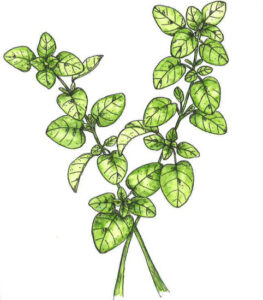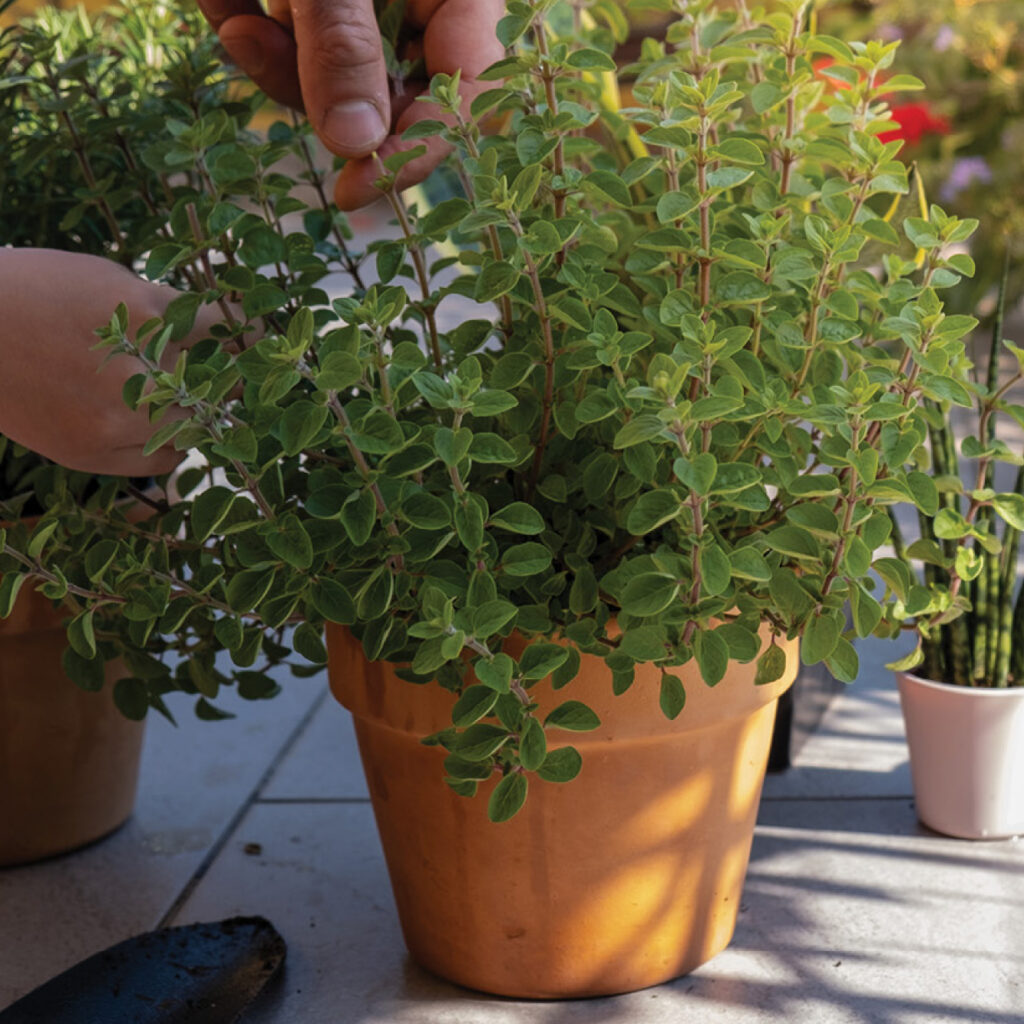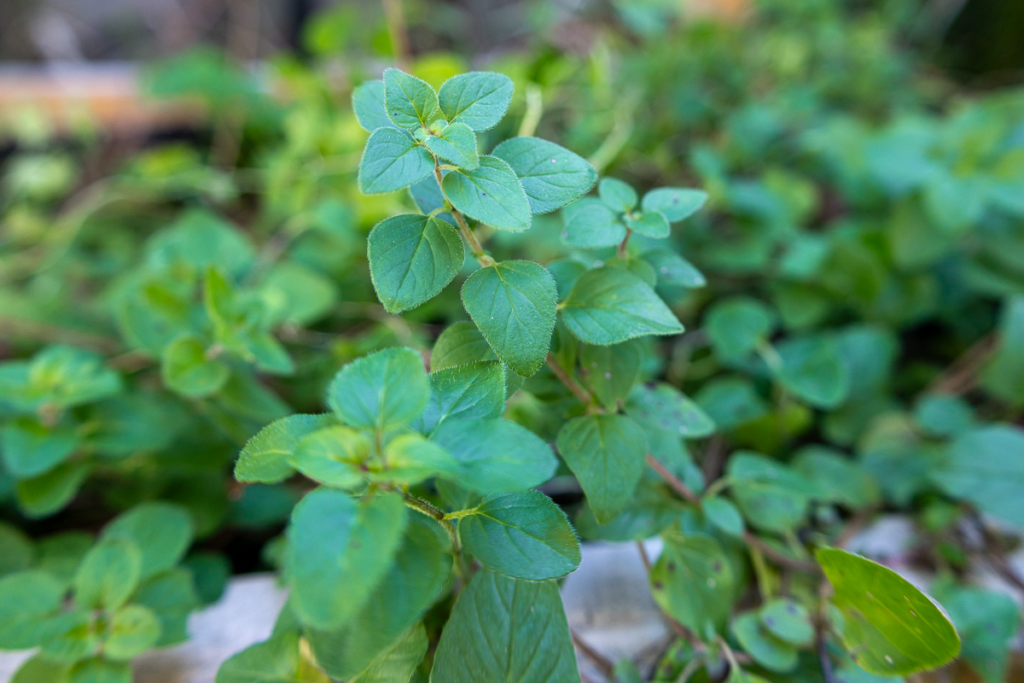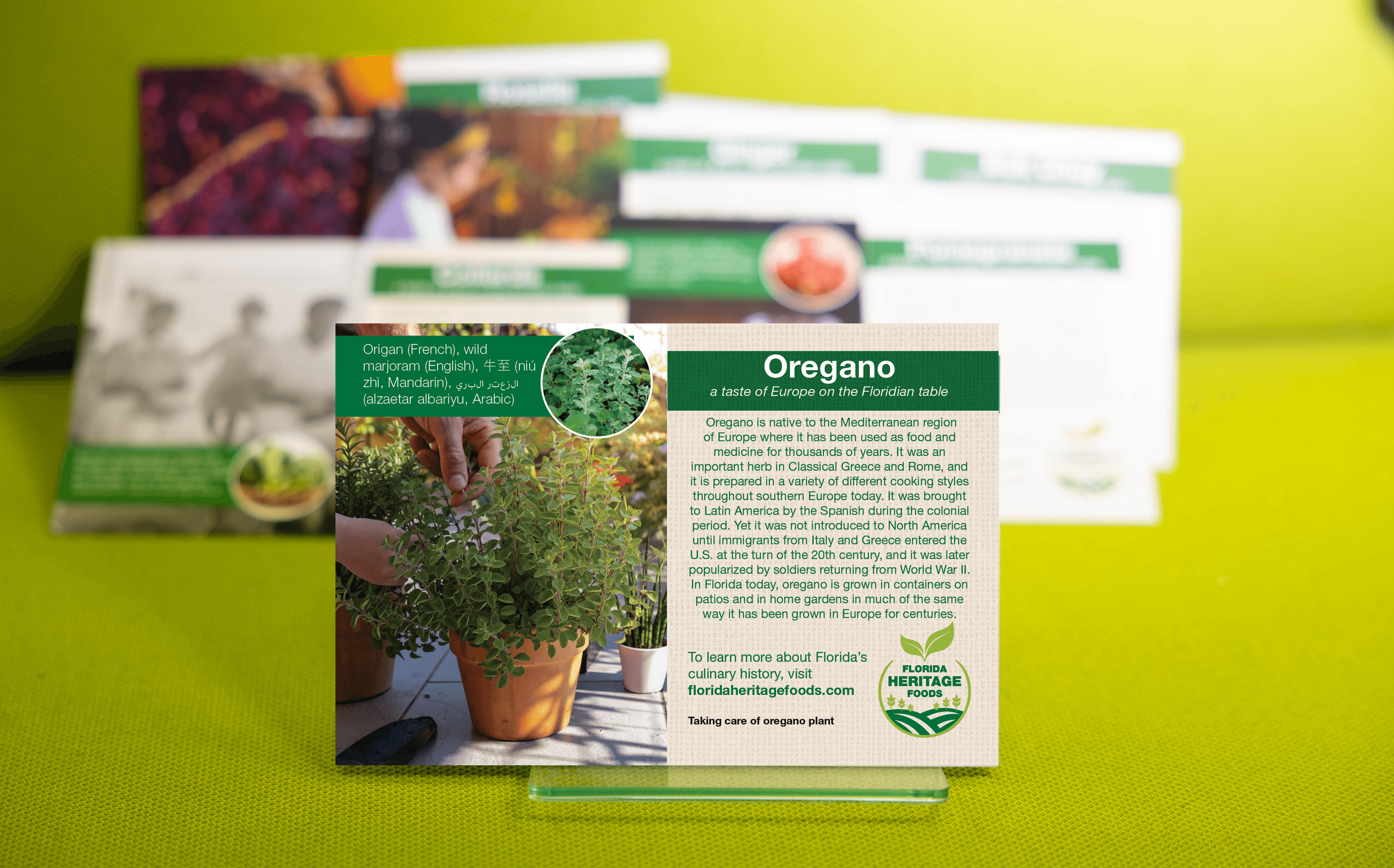Oregano
Origanum vulgare

Origan (French), wild marjoram (English), 牛至, (niú zhì, Mandarin), الزعترالبري (alzaetar albariyu, Arabic)
Oregano is native to the Mediterranean region of Europe where it has been used as food and medicine for thousands of years. It was an important herb in Classical Greece and Rome, and it is prepared in a variety of different cooking styles throughout southern Europe today. It was brought to Latin America by the Spanish during the colonial period. Yet it was not introduced to North America until immigrants from Italy and Greece entered the U.S. at the turn of the 20th century, and it was later popularized by soldiers returning from World War II. In Florida today, oregano is grown in containers on patios and in home gardens in much of the same way it has been grown in Europe for centuries.

Oregano is native to the Mediterranean, and it was a popular culinary herb during the Classical Greek and Roman period. It spread throughout Europe during the expansion of the Roman empire, and it was considered an important medicinal plant during the Medieval period. The herb was introduced to Asia through trade. Oregano was introduced to the United States during the wave of Italian and Greek immigration at the turn of the 20th century. It became a mainstay in Italian-American and Greek-American cuisine. Yet it did not gain mainstream popularity until after World War II when soldiers returning from the Italian Campaign in southern Europe developed a liking for oregano in the local cuisine. It was introduced to Latin America by the Spanish, yet the type of oregano most common in Latin America (Plectranthus amboinicus) is a different species than the European variety.
Oregano has been used for food and medicine for thousands of years. It was associated with Greek Aphrodite and Roman Venus, and the name is a compound of the Greek terms for oros meaning ‘mountain’ and ganos meaning ‘joy.’ It remains an important herb in Mediterranean herb gardens today, and it is prepared in a variety of different cooking styles throughout the region. In Turkish cuisine it is used to flavor meat, and throughout the Middle East it is used in a spice-blend condiment known as Zaatar. It is a staple herb in Italian cuisine where it is used in a variety of sauces, pasta dishes, and creates the distinctive ‘pizza flavoring.’ It is also used in Greek cuisine such as the grilled meat skewer called ‘souvlaki.’ In the Americas, oregano flavors the raw sauce called ‘chimichurri’ in Argentina, and it is a significant flavor in Italian-American cuisine in the U.S. where it is used as a condiment in pizza and pasta restaurants throughout the country. In Florida, oregano is grown in containers on patios and in home gardens in much of the same way it has been grown in Europe for centuries.

Oregano is rich in iron, manganese, vitamin K, fiber, and calcium.


Oregano can be planted most of the year – just not the hot, summer months – by cuttings and transplants. Harvest November through May.
To plan, a heritage garden, download the ‘Planning a Florida Heritage Garden (PDF).’

Santa Fe College Partnered with Multiple Organizations in a Collaborative Effort to Bring Awareness of the Heritage Plants In Florida.
BY CULTURAL HISTORY
BY GROWING SEASON
DROUGHT TOLERANT PLANTS
Commitment to Equal Access and Equal Opportunity
Santa Fe College is committed to an environment that embraces diversity, respects the rights of all individuals, is open and accessible, and is free of harassment and discrimination. For more information, visit sfcollege.edu/eaeo or contact equity.officer@sfcollege.edu.
SACSCOC Accreditation Statement
Santa Fe College is accredited by the Southern Association of Colleges and Schools Commission on Colleges (SACSCOC). For more information, visit sfcollege.edu/sacscoc.
